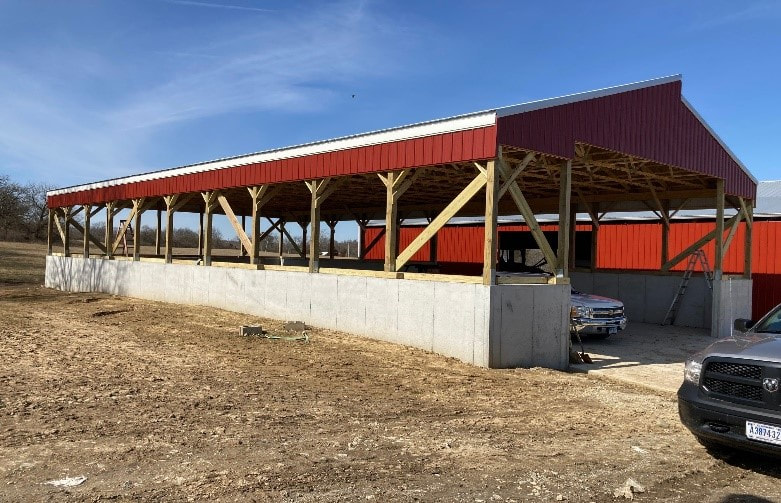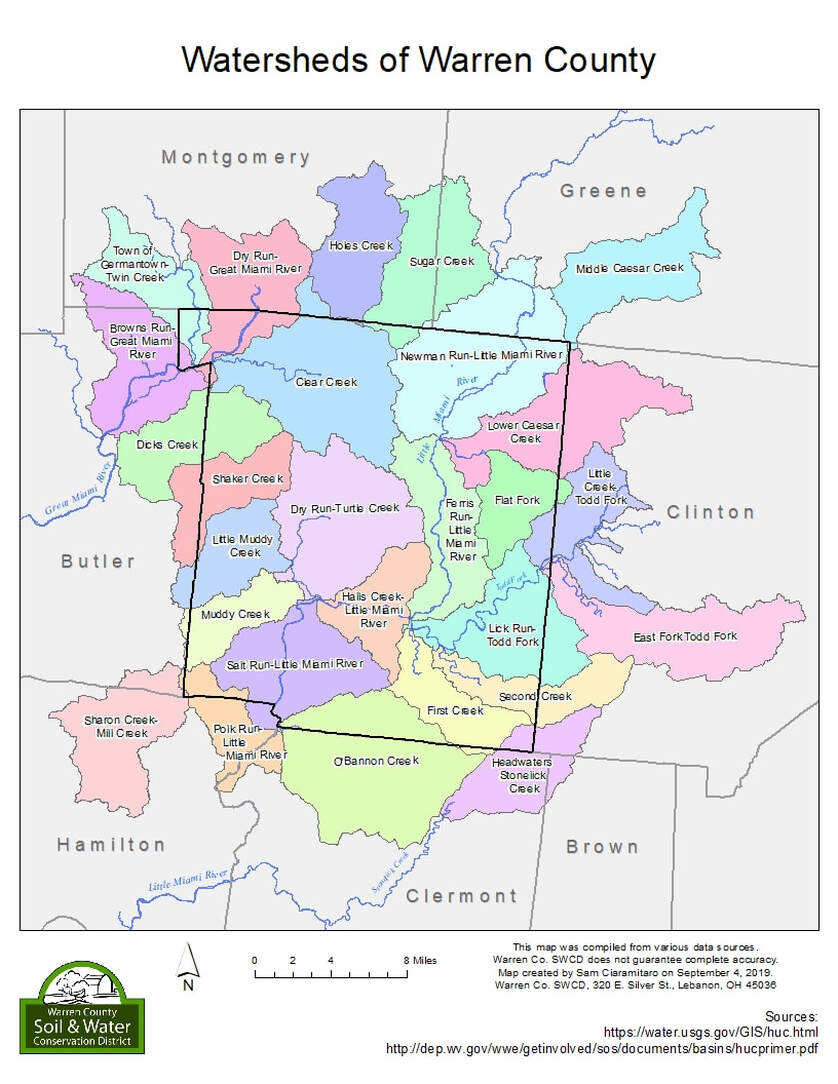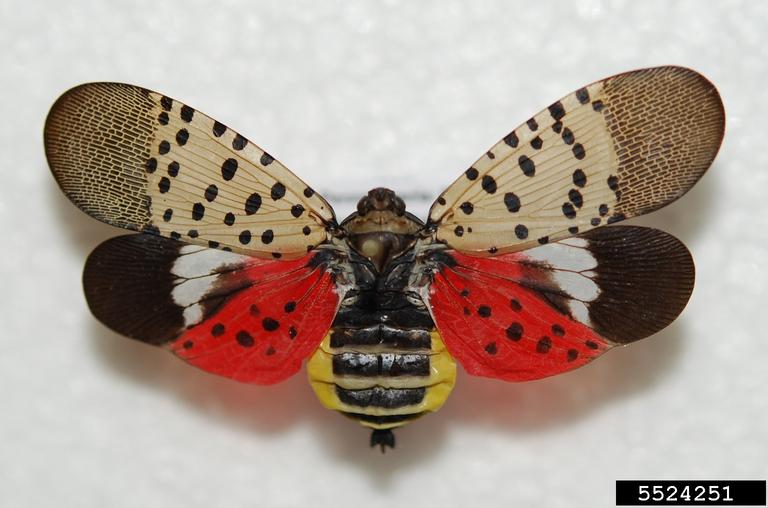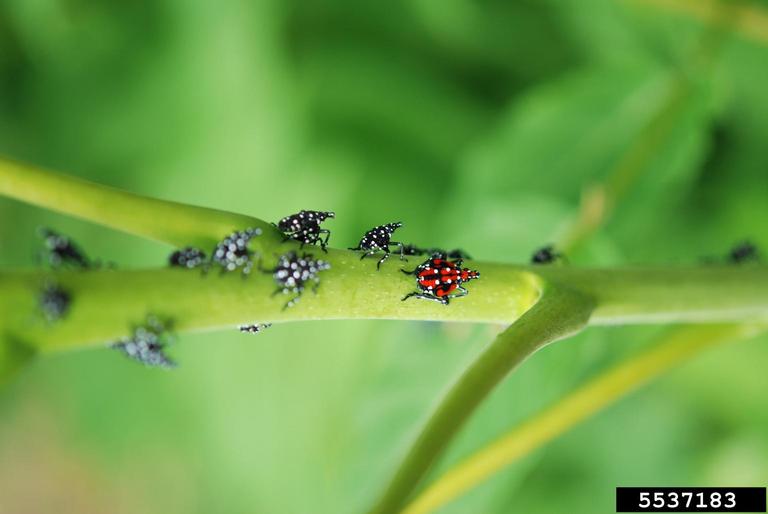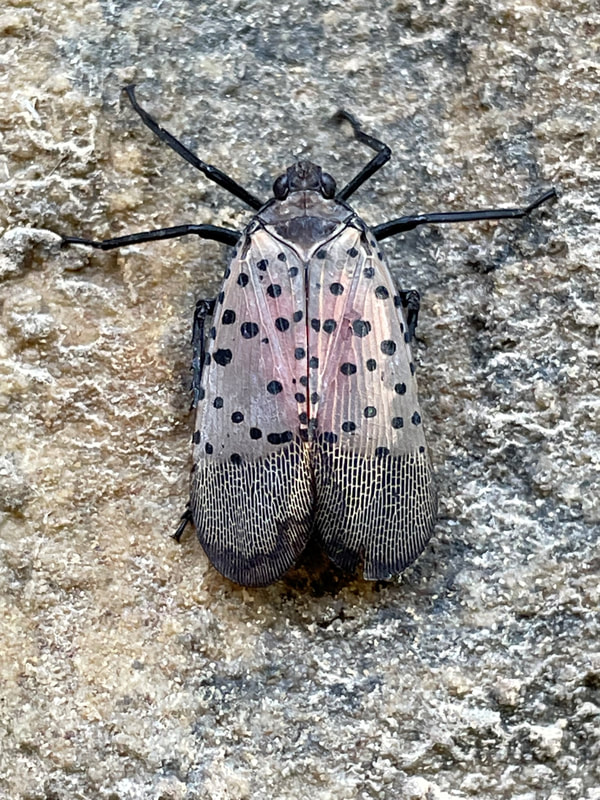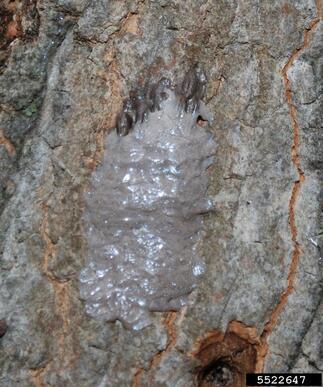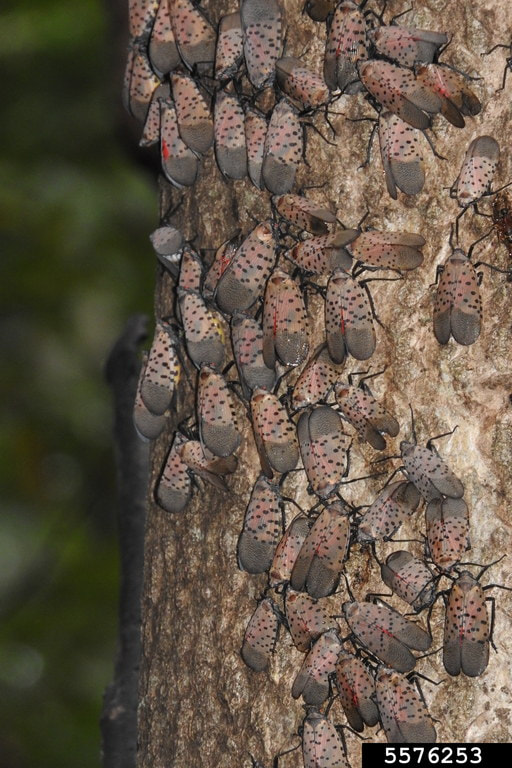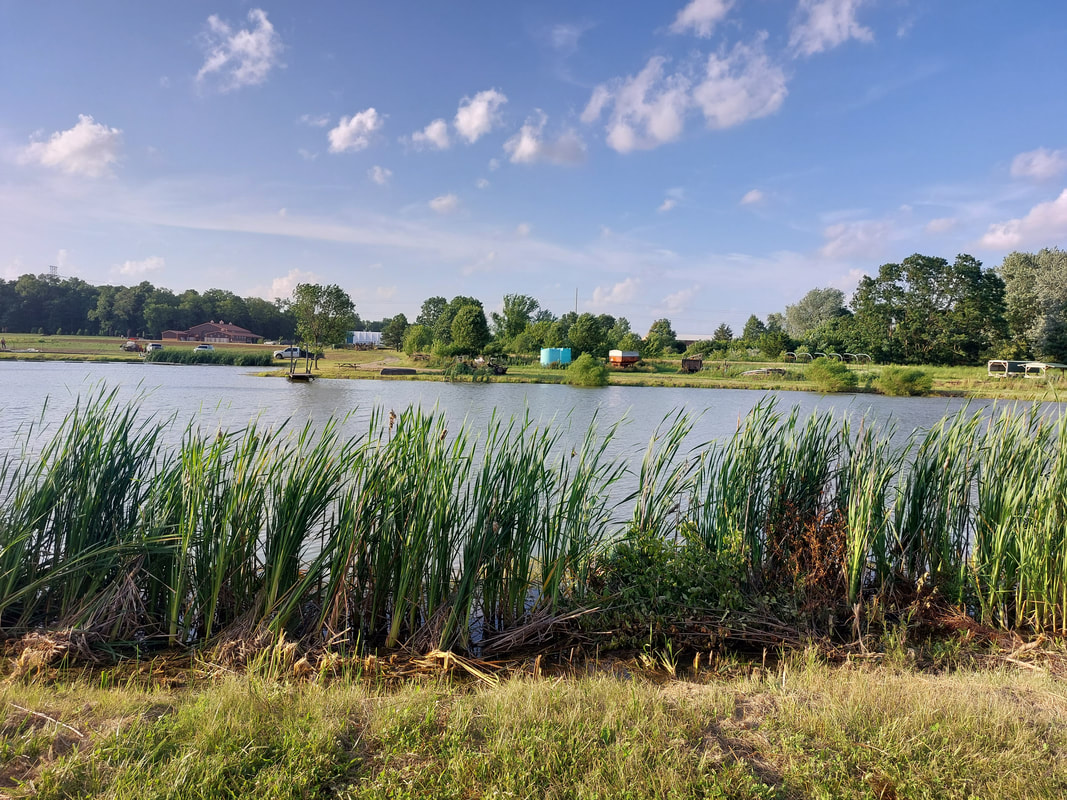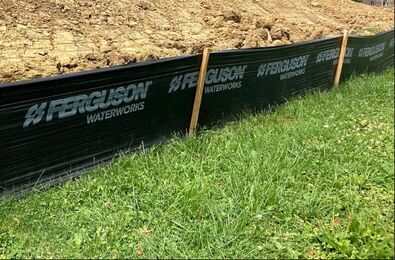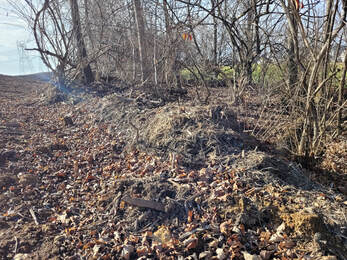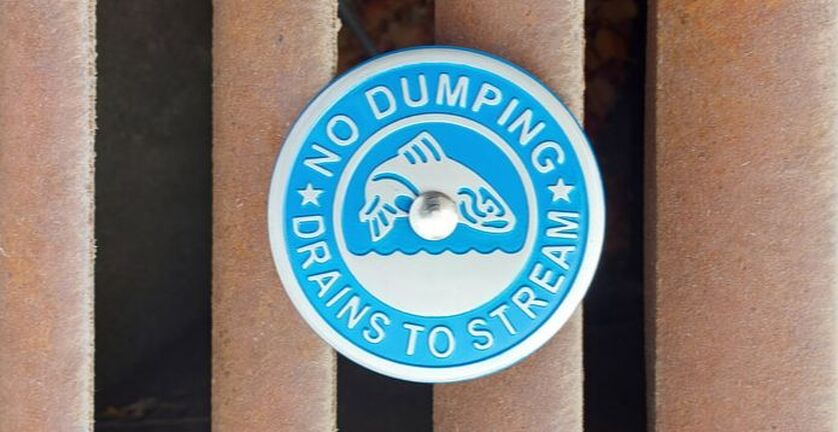|
A horse, on average, can weigh nearly 1,000 pounds and can defecate roughly 13 times a day. This roughly equates to about 50 pounds of wet manure a day – including urine. The bedding that is gathered in the animal waste, also contributes to the weight. The bedding can increase the total volume to 2-3 feet of waste per day. Per one ton of manure, the nutrients that can be found include nitrogen, phosphorus, and potassium – with bedding having the potential to also affect the nutrient reading. If not managed properly, manure runoff can cause pollution with the potential to negatively impact local waterbody sources.
Storage:
Keeping animal waste as dry as possible results in less waste that must be transported elsewhere. Consider a NRCS Conservation Practice for a waste storage facility which will help prevent runoff and is also helpful for winter storage, since Ohio does not allow manure spreading on frozen or snow-covered ground. For large facilities, cost-share options may be available. Composting: Composting utilizes an accelerated decomposition process that uses the organisms and bacteria found growing in the soil that helps break down manure. The process requires proper oxygen and moisture levels, as well as proper feedstock mixture, to ensure proper microbial activity. The composting piles must be turned to ensure proper aeration and the final product of composting is a crumbly and has a low odor and resembles topsoil. Contact a technician at Warren County Soil & Water Conservation District at (513) 695-1337 if you have questions. Also, consider the Ohio Livestock Manure Management Guide written by OSU Extension: https://agcrops.osu.edu/sites/agcrops/files/imce/fertility/bulletin_604.pdf
1 Comment
Did you know that no matter where you live, everyone lives in a watershed? Yep, you read that right. Every part of Warren County, the state of Ohio, and the United States is all part of a watershed. So now you may be wondering, what is a watershed? A watershed is a land area that drains to a central location, such as a lake, river, or ocean. Think of it as a shallow depression or bowl in the landscape where the “rim” is a ridge or hill. Here in Ohio, we have two main watersheds: the Lake Erie Watershed and the Ohio River Basin Watershed. In Warren County, we are part of the Ohio River Basin Watershed, but when broken down even further, Warren County is made up of several smaller watersheds that drain to either the Great Miami River or the Little Miami River. The Great Miami River is in the northwest corner of Warren County and flows through 15 counties in Ohio into the Ohio River. The Great Miami River’s watershed is comprised of urban development and agricultural land. The Little Miami River runs nearly the entire length of Warren County and, like the Great Miami River, flows into the Ohio River. The Little Miami River’s watershed spans across a large portion of southwestern Ohio, encompassing all or part of 11 counties. Much of the watershed that feeds into the Little Miami River is comprised of agricultural land, but the watershed still contains urban development. After the water from the Great Miami and Little Miami Rivers flows into the Ohio River, it makes its way to the Mississippi River and then reaches its destination in the Gulf of Mexico.
To understand more about how water systems are connected, it is important to note that even the smallest of actions can affect a watershed. Runoff from fields, lawns, and pavement could carry potentially harmful materials into the watershed. In Ohio, harmful algal blooms caused by phosphorus runoff, failing drinking water systems, wastewater, and aging water infrastructure are some of the top water issues that are being addressed. In 2019, Governor Mike DeWine launched H2Ohio, “a comprehensive water quality initiative that is working to strategically address serious water issues that have been building in Ohio for decades” (H2Ohio, 2019). The top priorities of H2Ohio include reducing phosphorus, creating wetlands, addressing failing septic systems, and preventing lead contamination. H2Ohio in action locally! The Warren County Soil & Water Conservation District is in the process of securing a H2Ohio Wetland Grant that will fund the creation of a wetland to address stormwater flooding in Turtlecreek Township. For more information on the Ohio River Basin visit https://www.savelocalwaters.org/ohio-river-watershed.html and for more information on H2Ohio visit https://h2.ohio.gov/about-h2ohio/. For more information regarding watersheds, Warren County Soil and Water Conservation District programs and/or technical assistance, contact our offices at 513-695-1337 or wcswcd@gmail.com. We have been hearing about not moving firewood and to check materials being moved from one place to another for potential invasive insect hitchhikers for a long time. Staying vigilant about doing so is a must as invasive insects are prevalent around the State of Ohio. One such insect that we should all be aware of is the spotted lanternfly (SLF). SLF, a plant hopper, is a native insect to China, India, and Vietnam. SLF was first detected in eastern Pennsylvania in 2014 and has been detected in many eastern States from New Hampshire to North Carolina as well as Michigan, and Indiana. Ohio populations were found in Cuyahoga, Lorrain and Jefferson Counties in 2021 and late last year SLF was confirmed in Hamilton County (Ohio Department of Agriculture. Facebook, 13 Oct. 2022, https://www.facebook.com/OhioDeptofAg/.). According to the United States Department of Agriculture (USDA), “adult spotted lanternflies are about 1 inch long and one-half inch wide, and they have large and visually striking wings. Their forewings are light brown with black spots at the front and a speckled band at the rear. Their hind wings are scarlet with black spots at the front and white and black bars at the rear. Their abdomen is yellow with black bars. Nymphs in their early stages of development appear black with white spots and turn to a red phase before becoming adults. Egg masses are yellowish-brown in color, and most are covered with a gray, waxy coating prior to hatching.” The primary host of SLF is the tree of heaven (Ailanthus altissima). Tree of heaven is a rapidly growing deciduous tree native to China that is now spread across North America. It is a problem as well because it spreads quickly and aggressively by producing enormous amounts of seed (approximately 300,000 annually) and it secrets a chemical into the soil that is toxic to surrounding plants. While finding an invasive insect that eats an invasive tree sounds like good news, it is not. Unfortunately, SLF also likes to dine on other plants and trees including grape, hop, apple, stone fruit, maple, poplar, pine walnut, sycamore, and willow. SLF lays eggs on smooth host plant surfaces and on non-host material, such as bricks, stones, outdoor furniture, playground equipment, firewood, etc. Eggs hatch in the spring and early summer, and nymphs begin feeding on a wide range of host plants by sucking sap from young stems and branches. Adults appear in late July and start to feed. As the adults feed, they excrete a sticky sugary substance called honeydew. The fluid builds-up on plants and on the ground underneath infested plants, causing sooty mold to form. The feeding weakens the plant, reducing photosynthesis, and eventually can lead to killing the plant. SLF can fly short distances, walk, and jump, but its long-distance movement is helped by humans thru moving infested materials. According to Ohio Department of Agriculture (ODA), “on October 28th, 2021, the ODA announced a quarantine to combat the spread of the spotted lanternfly. SLF is now designated a destructive plant pest under Ohio law, which increases inspections and restricts movement of certain items from infested counties in Ohio and other states into non-infested Ohio counties.”
If you suspect that you have found SLF, please call or email the Plant Pest Control Section of the Ohio Department of Agriculture: (614) 728-6400 or plantpest@agri.ohio.gov. or report via the EDDMapS Great Lakes Early Detection Network mobile app. For more information regarding SLF, Warren County Soil and Water Conservation District programs, and/or technical assistance on water or soil questions, visit http://warrenswcd.com or call 513-695-1337. Additional Resources: Ohio Department of Agriculture - https://agri.ohio.gov/divisions/plant-health/invasive-pests/slf USDA Animal and Plant Health Inspection Service - https://agri.ohio.gov/divisions/plant-health/invasive-pests/slf New York State Integrated Pest Management, Cornell University - https://nysipm.cornell.edu/whats-bugging-you/spotted-lanternfly/ Penn State Extension – Tree of Heaven - https://extension.psu.edu/tree-of-heaven There are many ponds in Warren County. Some are attractive, full of water, and look healthy. Some are only half full, choked with weeds, and an eyesore on the landscape. If you are considering building a pond on your property, which type you might end up with (attractive or eyesore) depends largely upon some careful research and planning before the bulldozers and backhoes roll in. The two most important considerations are soil type/texture within the pond site and quantity/quality of the drainage area feeding into the pond site. Soil conditions vary widely and sometimes abruptly across the landscape. The ideal soils for pond construction are fine silty clays that pack well with low permeability. Warren Co SWCD's office recommends that soils be investigated early in the planning process to identify whether suitable clay is available within the site. This investigation can generally be performed with a normal construction backhoe. A series of holes are dug within the site to a depth exceeding the expected pond bottom. This reveals the soil profile that will be encountered during construction. If the planned pond will require construction of a dam, special attention should be given to the area of this proposed structure. This is a small investment of time and money and is well worth it before effort is expended on a failed project.
Surface water runoff is the source of water for almost all ponds in Warren County. It is important that the site has the proper sized watershed (drainage area) in relation to pond size desired. A good rule of thumb is: If you want a 1 acre pond, the watershed should be a minimum of 6 acres (6:1 ratio) or a maximum of 30 acres (30:1 ratio). The land use within the watershed is also important. A well vegetated and clean drainage area will provide the best water for a pond site. Areas of potential pollution such as septic leach fields, concentrated livestock areas, cultivated areas, and road ditches increase the possibility of contaminated water reaching the pond site. Ideally, it’s preferrable that the pond owner has control and management of the entire drainage area where possible. That way, the owner knows and controls the quality of the water coming into the pond. Ponds may just seem like holes in the ground that collect water, but there is much to consider in planning for and maintaining a successful one. Warren Co SWCD technicians are available to consult with Warren County landowners who are planning to build or need advice on managing a pond on their property. Our technical assistance calls are always free and we encourage everyone to take advantage of these services! For more information, call our offices at (513) 695-1337 or sign up for the upcoming 2023 Pond Clinic here. There are 88 counties in Ohio, each with a Soil and Water Conservation District (SWCD). SWCDs were created in response to the Dust Bowl event of the 1930s, when poor farming practices, heat, and drought led to wind-blown erosion on a massive scale. The loss of valuable, organic-rich topsoil threatened food production and livelihoods. In fact, the International Soil Reference and Information Centre estimates that seventeen percent of the world’s soils have been strongly degraded and those areas are growing, leading to increased global food insecurity. Soil formation is a slow process so replacing lost soil is challenging. It can take 500 to 1,000 years for one inch of topsoil to form depending on environmental factors (Columbia University). When erosion occurs, not only is this valuable resource lost, but it ends up in streams and lakes. The suspended sediment clouds water, making it hard for aquatic life to breathe and find food. Erosion prevention is important on farms and construction sites where the soil is excavated and moved around. One way Warren Co SWCD targets erosion is through administering Earth Disturbing Permits and upholding the Ohio EPA’s Construction General Permit. Earth disturbing activities larger than one acre are subject to the Earth Disturbing Permit process. The process usually begins with a review of a Stormwater Pollution Prevention Plan. In this plan, engineers detail how multiple erosion control measures work together to achieve a cumulative effect to reduce the amount of sediment carried off-site from weather or construction activity. You may have driven by a construction site and wondered, what are those black fences or rolls? These are just a few of the best management practices (BMPs) designed to minimize off-site tracking of sediment into roads and waterways. Silt fences are made of black fabric and are meant to pond water behind them, allowing sediment to settle out. These are usually used as perimeter controls. Mulch berms and filter socks filled with mulch also work well to filter sediment. Lots under construction typically have filter socks placed along the perimeter of the site. However, some sediment can escape and make its way to a storm drain. Only rainwater should go through a storm drain in the street, so inlet protection is required on drains to catch sediment before it makes its way further. It is crucial that pollutants are not poured down a storm drain because these drains do not lead to a treatment facility—they drain directly to a waterway without treatment. Inlet protections come in many forms, but mesh drop baskets work well to trap sediment during construction. After reaching storm drains, stormwater usually drains to a basin. This is the last stop before leaving the site and being discharged into a creek or river. To help reduce sediment leaving the construction site, a basin is designed as a sediment settling pond, draining water through a skimmer device that floats on the surface. While the skimmer floats on top, sediment falls to the bottom of the basin and settles. This way, the skimmer can drain the cleanest portion of water from a basin. When functioning properly, a multitude of site controls work together to greatly reduce the amount of sediment-laden water leaving the site and impacting the waterways. Closing a project involves a final walkthrough to ensure that the site is fully stabilized with grass and that temporary erosion control measures are removed. When exposed soil has been fully stabilized with grass, there is no longer a need to filter sediment from runoff. There are many ways stormwater is controlled on a construction site before it is discharged into a waterway. Monthly inspections help ensure that the temporary stormwater controls are maintained and functioning properly. Construction sites are messy by nature, and stormwater management is a continuous effort. Only sites over an acre are regulated through our earth disturbing process, but you can help protect our cherished natural resources regardless of the size of your project. Building a shed in your back yard? Ensure that sediment is filtered by installing a mulch berm along the downslope perimeter of your property to filter the runoff until the ground is stabilized with grass. Let’s all take part in the effort to preserve our soils and streams for future generations as our ancestors did for us. Resources:
Columbia University. https://news.climate.columbia.edu/2012/04/12/why-soil-matters/#:~:text=It%20can%20take%20500%20to,%2C%20topography%2C%20and%20living%20organisms. Ohio EPA Rainwater and Land Development Manual. https://epa.ohio.gov/divisions-and-offices/surface-water/guides-manuals/rainwater-and-land-development?msclkid=cb5f60f4b48d11ec8b5ece1ef5e16d3c |
Details
Warren County SWCD Staff BlogA blog to keep you informed on all the latest news at Warren County SWCD and in the conservation world. Archives
March 2024
Categories
All
|
|
|
Contact:PHONE: (513) 695 - 1337
EMAIL: wcswcd@gmail.com HOURS: Monday - Friday 7:30am - 4:00pm (except holidays) Connect:Warren County Soil & Water Conservation District Copyright © 2016
Warren SWCD Privacy Notice. Emails are serviced by Constant Contact. Constant Contact's Privacy Notice. |
